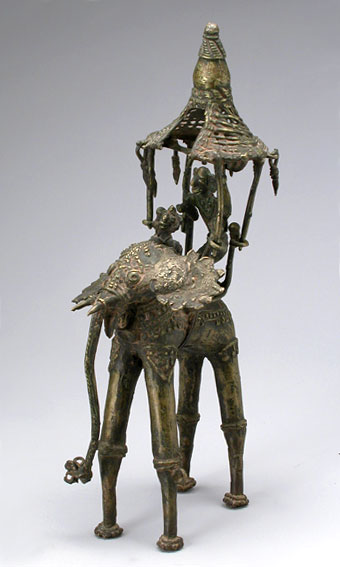

An elephant rider, from the 1800's
Source: ebay, Apr. 2007

A deity seated on an elephant, used as a shrine figure, 1800's; *another view*; *a closeup of the deity*; *a closeup of the elephant's head*
Source: ebay, Aug. 2007

A horseman, c. early 1900's
Source: ebay, June 2007
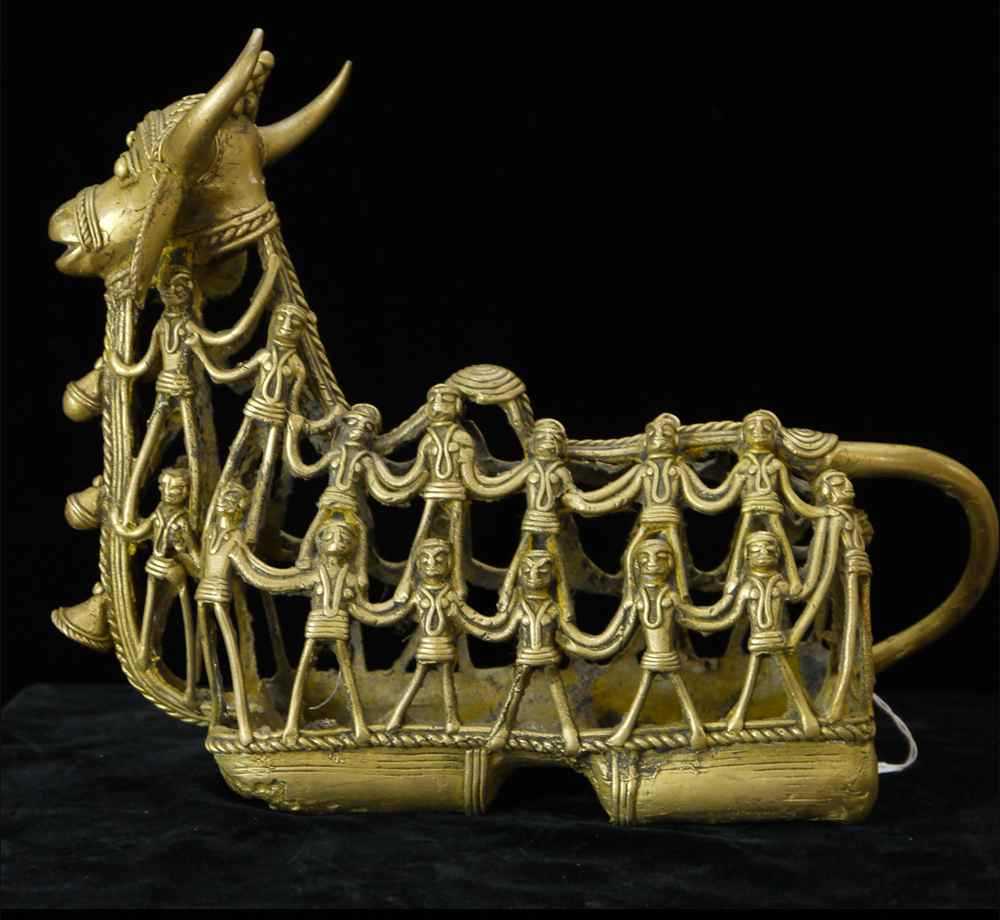
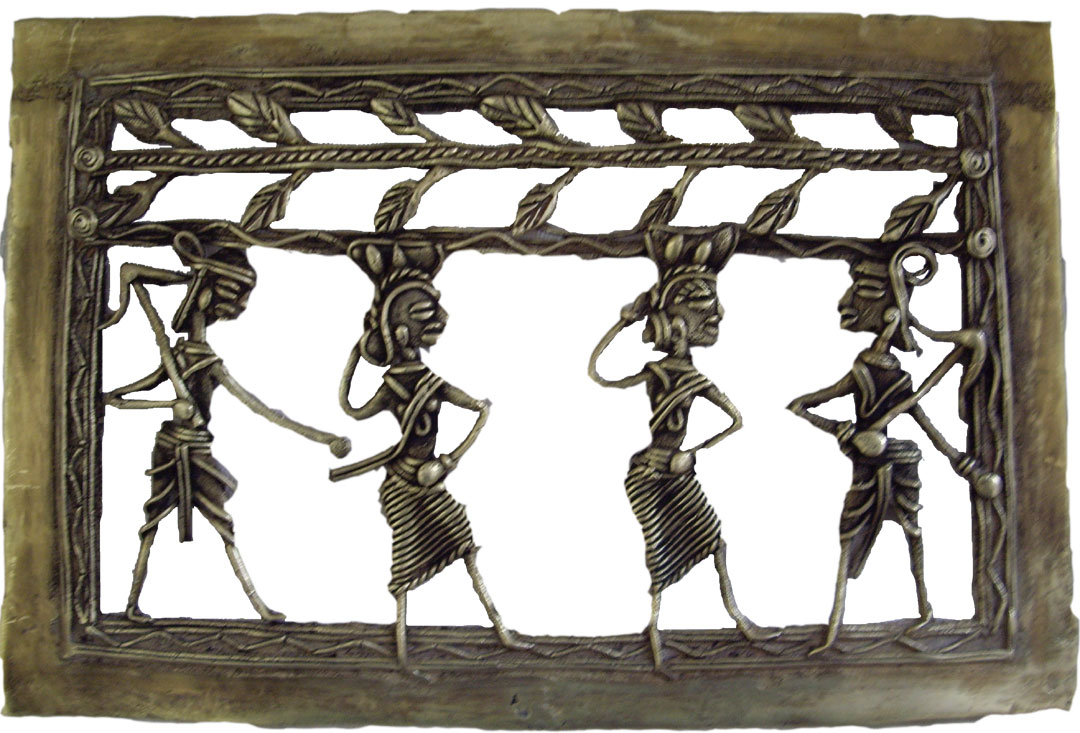
A wall panel in Bastar style
Source:
http://www.indiaclub.com/shop/customerreviews.asp?ProdStock=91186&itemname=Bastar+Style+Wall+Hanging+in+Brass+(Small)
(downloaded Apr. 2007)
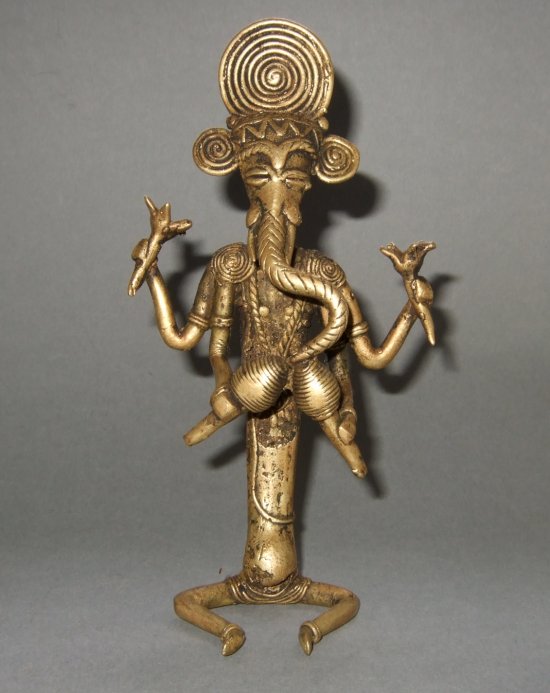
Ganesh, playing musical instruments; *a closer view*; *a back view*
Source: ebay, Dec. 2007
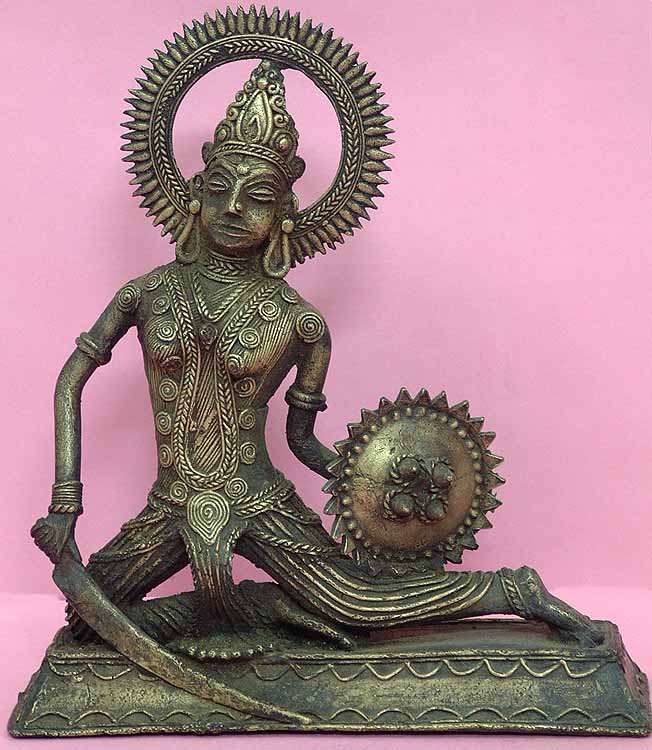
A modern piece: the goddess Danteshvarimai
Source: http://www.exoticindia.com/product/ZJ91/
(downloaded Apr. 2007)
Commentary by the seller:
"The main shrine of Danteshvarimai, the primary deity in Bastar, is located at Dantevara by the river Indravati near Jagdalpur. According to a legend the then ruling king went to Warangal, in Andhra Pradesh, where he requested the deity to protect his state and reside in it. She agreed on condition that he would lead the way and did not turn back to look at her as her jingling anklets would have to be enough for him to know that she was following him. However, while crossing the Indravati, sand filled her anklets. Not hearing the bells, the king looked back to find that the deity had disappeared. He therefore installed a shrine in honour of Telangeen or the goddess from Telangana.
Another legend tells of how an ancestor of the Kakatiya dynasty, an ardent devotee of goddess Danteshvari, was ordered to hold her vastra, or cover cloth, and follow her over an area which would thereby become his kingdom and later be ruled by his successors. Despite her warning not to look back, the king did so and the goddess disappeared before his eyes. He nevertheless built a temple in her honour and henceforth his state became known as vastra, meaning "cloth" believed to be the original name of Bastar."
== Indian Routes index == Indian Routes sitemap == Glossary == FWP's main page ==